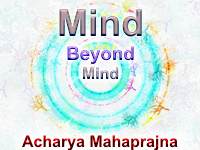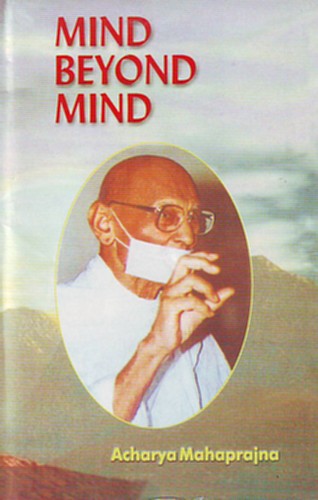
.
The human body is divisible into three parts: the upper, the middle, and the lower. Physiologists and anatomists have studied the body from their own point of view. The masters of Yoga have studied it in their own way. According to them it has several knowledge centres or consciousness centres. The activation of these centres results in the generation and circulation of energy in the body. We can feel this circulation. Mahavira speaks of the enlightened person who keeps his eyes wide open and whose vision is so disciplined that he can perceive Loga or the upper, middle, and lower parts of the body.
Loga means the human body. In ancient wisdom objects were understood and explained with reference to the human body. The Jain tradition conceived the idea of Loka Purusa in order to explain the human body. It is compared to a Purusa or human person. The universe as well as the human body was divided by them into three parts: the upper, the lower and the middle. Every one of these is the object of meditation. Mahavira used to meditate on all the three parts. The first part consists of the uppermost part of the brain called the Kapala. This is the most important area of concentration of the mind. It is also the most important energy centre. The second area of concentration is the Ajna Cakra situated behind and between the eyebrows. The third area of concentration is the Visuddhi Cakra situated in the middle of the throat. It is the Thyroid gland. The fourth area is situated twelve fingers length from the navel in a straight line from the throat. It is called the Manah Cakra.
The Jain tradition also speaks of areas called Rucaka Pradesas, which do not possess any cover and remain exposed. Karma particles (material particles) cannot cover these areas. These centres, when they become covered, affect consciousness and do not allow the Jiva (living being) to remain what it is. Acaryas of Yoga have conceived the Manah Cakra after the image of a flower with eight petals. The next is the area of the heart, which is also an area to be meditated upon. These centres in the upper part of the body are special centres of consciousness.
The most important centre of energy in the middle part is the navel. It includes the sides of the navel also and is a very strong centre of energy. The curve at the lower end of the spinal cord has a gland near it, which is the seat of the Kundalini. It produces Prana or vital energy. It generates electric currents and supplies them to the whole body. At the base of the genitals is yet another energy centre. The other centres in the lower parts of the body are the toes.
All these centres are centres of consciousness. Which centre to concentrate upon depends on what we want to achieve through meditation. What is the procedure of activating these centres? The easiest method is to concentrate the mind on the centre, which you want to activate. The more the concentration, the more active does the centre becomes. One, who is excessively given to the sex disposition, will find the sex centre excited, if he concentrated upon it. One, who aims at achieving knowledge and vigorously concentrates upon the central part of the brain, will achieve knowledge. One, who wishes to develop piety, should concentrate on the Visuddhi Cakra. This concentration will gradually eradicate the sex passions and develop the feeling of piety. One, who aims at the development of intuitional knowledge and the capacity to foresee future events, should concentrate on the Ajna Cakra. These are the various purposes with which we perform meditation. A person, who becomes the object of our affection, extends a helping hand to us. If we train the knowledge centres properly, they will certainly cooperate with us. The centres, which we have not attended to and developed, will not be activated and will not cooperate. Naturopathy and mental therapy are based on the principle that if you are suffering from intestinal disorders, the best cure is to concentrate the mind on the diseased intestines and to wish them to function normally. The knowledge centres associated with the intestines will make the latter function in the desired way. If we are indifferent to the knowledge centres, they will not function. One, who wants to activate his vital force or the Taijas centres, should concentrate on the centre at the lower end of the spinal cord, which strengthens the flow of the vital force.
The toes of the feet are the points at which the flow of the vital force ends. This flow begins at the tip of the nose and ends at the toes. One, who proposes to safeguard the energy or the seminal fluid, should concentrate on the toes. The science of Yoga prescribes a particular posture for those who suffer from seminal diseases. They should lie prostrate with their heads raised a little higher and concentrate on the toe. This concentration is to last for a few minutes only. They will be cured of the disease with a few days' practice.
The centres of the body referred to above are the points on which the mind is to be concentrated. Physiologists have mentioned a few more glands in addition to those mentioned above and we may profit by their knowledge.
 Acharya Mahaprajna
Acharya Mahaprajna

